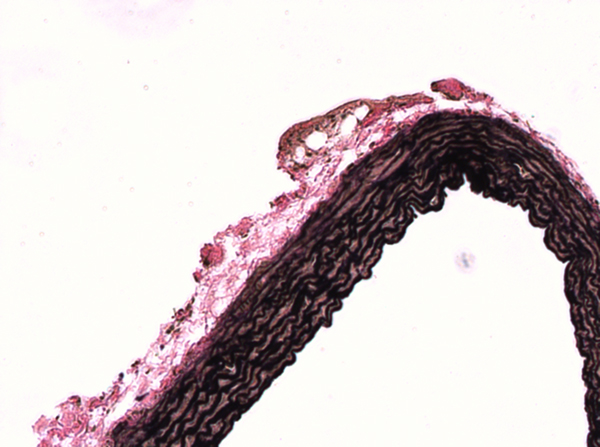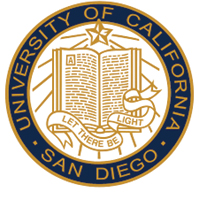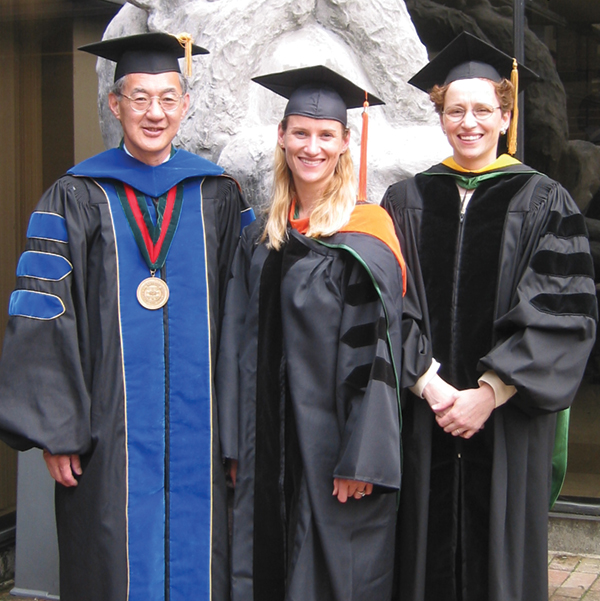Changing the approach
Jessica Wagenseil’s work will likely point to new and more effective treatments for cardiovascular disease

Wagenseil uses mechanics to identify heart disease
Arterial stiffness. Hypertension. Atherosclerosis. Diabetes. These stubborn diseases are as potentially lethal as they are rampant. They disrupt the body's systems, including the life-supporting arteries that circulate blood. In the presence of disease or genetic mutations, the coronary arteries struggle to adapt, altering the exquisite biomechanical interplay meant to ensure efficient performance for a lifetime.
Through her basic research on cardiovascular mechanics, often conducted collaboratively with colleagues in the McKelvey School of Engineering and at the School of Medicine, Jessica Wagenseil is constructing an intricate knowledge system. Experiment by experiment, scientific paper by paper (more than 40 have been published to date), Wagenseil is assembling insights into how changes in the different mechanical properties of the large arteries, such as stiffness, are related to disease, and how arteries develop and remodel to provide optimal performance. Her work on these frontiers will very likely point to new and more effective treatments for cardiovascular disease.

Wagenseil joined the Mechanical Engineering & Materials Science (MEMS) faculty as an associate professor in 2013. Ten years earlier, Robert P. Mecham, the Alumni Endowed Professor of Cell Biology and Physiology and professor of medicine, of pediatrics and of biomedical engineering, sat on her dissertation committee in part because he worked on vascular biology. Afterward, he invited Wagenseil to be a postdoctoral researcher in his lab.
"I thought it would be a great idea for her to help us learn some engineering," he says, "and in the meantime, we'd provide biological models for her to learn some vascular biology."
Along the way, Wagenseil became interested in the body's ubiquitous stretchy protein elastin, which is reversibly elastic and, along with collagen and more than 40 other proteins, makes up the artery wall.
For decades, professionals believed that hypertension and stiffness in artery walls worsen atherosclerosis by creating additional plaque buildup, which can lead to heart attack, heart disease or stroke. But in a National Institutes of Health-supported 36-week study of mice, which were fed the typical high-fat Western diet, Wagenseil showed that while high blood pressure and artery stiffness often co-exist with plaque, they do not directly cause it. Instead, damaged elastin in the form of fragments in the artery wall appears to be the risk factor for plaque accumulation.

Wagenseil earned a bachelor’s of science in bioengineering from the University of California, San Diego.

Wagenseil earned a doctorate of science in biomedical engineering from Washington University in St. Louis.

Wagenseil is involved with Girls on the Run in the St. Louis community and is an avid runner — rain or shine.
"Without elastin fragmentation, hypertension and arterial stiffness have no effect on plaque buildup," Wagenseil says.
Published in the journal Atherosclerosis, Wagenseil's findings could change the scope of how heart disease — still the world's leading cause of death for both women and men — is identified and treated.
In addition, Wagenseil and Mecham are investigating vessel stiffness, hypertension and remodeling of the vessel wall.
"We're interested in what's happening in the artery wall, what proteins are being laid down, and how and whether we can interfere with the process to prevent stiffening and the associated hypertension," Wagenseil says. Related questions include how cells know how much elastin to make, where to put it and when to start and stop.
Mecham says his collaboration with Wagenseil provides insights that would be unattainable without including the complexities of mechanical forces in his investigations.
"The interesting intersection between my background in cell biology and Jessica's background in mechanics represents an interface that can be difficult for some researchers from entirely different disciplines to achieve," he says.
Wagenseil also investigates arterial development with funding from the National Science Foundation. Using models of genetic diseases, she studies the processes that give large arteries their unique mechanical properties, including how cells lay down elastin in a formidably complicated assembly process during the early months of life. For example, she recently published a paper with Larry Taber, senior professor of biomedical engineering, showing that when blood flow in a developing chicken embryo is reduced, cells sense the change and alter the way they make the artery wall, laying down less elastin than they would otherwise. Wagenseil is seeking funding for further developmental studies despite reduced federal funding for basic research that has persisted for more than a decade.
All of Wagenseil's ambitious basic research is crucial to her future discoveries. It may be transformative for the undergraduate and graduate researchers brimming with ideas and enthusiasm in professors' labs and important for students in their classes and seminars. And through an outreach program Wagenseil runs with her former mentor, MEMS Senior Research Associate Ruth Okomoto, her new knowledge even reaches children in middle school and may spark a lasting interest.

